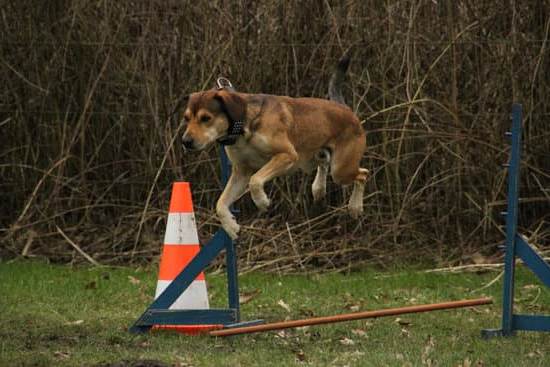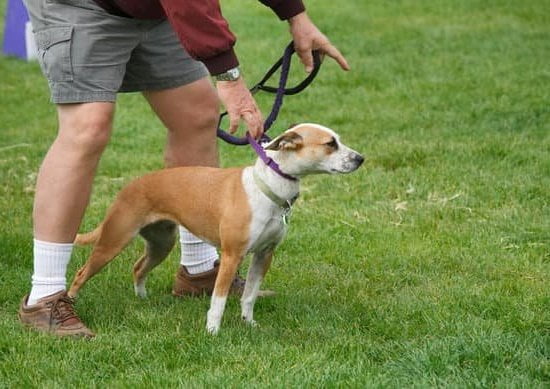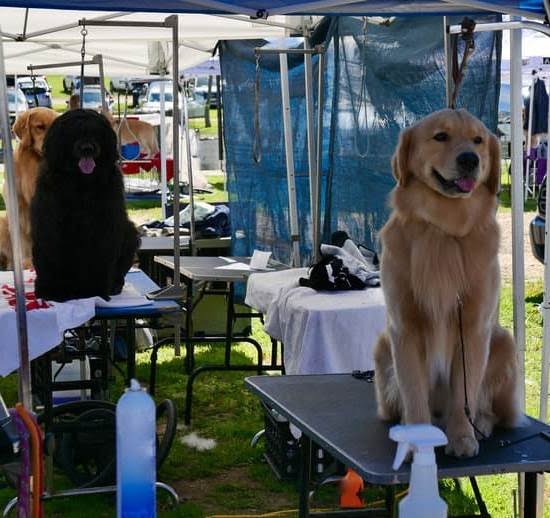Search and rescue dog training is a critical aspect of emergency response and disaster recovery. These specially trained canines play a vital role in locating missing persons, providing assistance during natural disasters, and aiding law enforcement in various situations.
In this article, we will explore the history, characteristics, selection process, basic and advanced training techniques, real-life success stories, as well as the ongoing training and certification necessary for search and rescue dogs. Whether you are a dog enthusiast or considering training a canine for search and rescue purposes, this comprehensive guide will provide valuable insights into this noble and crucial field.
The history of search and rescue dog training dates back to ancient times when dogs were used for hunting and tracking purposes. Over the years, these skills were adapted and refined to aid in search and rescue missions during times of crisis.
Today, search and rescue dogs have become indispensable members of emergency response teams across the globe. They undergo rigorous training to develop their innate abilities to detect scents over vast areas, navigate through challenging terrain, and communicate effectively with their handlers.
Successful search and rescue dogs possess unique characteristics that set them apart from ordinary pets. Their exceptional sense of smell, physical agility, intelligence, adaptability, courage, and strong bond with their handlers are essential traits that enable them to excel in their crucial roles. Understanding these characteristics is fundamental in identifying potential candidates for search and rescue dog training programs as well as in shaping effective training methods to harness their abilities.
The History of Search and Rescue Dog Training
In the early 20th century, World War I and II further solidified the value of search and rescue dogs as they were employed to locate wounded soldiers on the battlefield. It was during this time that more deliberate efforts were made to train and use dogs specifically for search and rescue operations.
These efforts continued to evolve over the years, leading to the establishment of dedicated search and rescue dog organizations, such as the National Disaster Search Dog Foundation (SDF) in the United States.
Today, search and rescue dog training has become a specialized field with different techniques designed for urban environments, wilderness areas, disaster zones, and more. The history of this type of training is a testament to the incredible capabilities of dogs when it comes to aiding in life-saving missions.
| Year | Significant Event |
|---|---|
| Late 18th century | Hospice du Grand St. Bernard monastery in Switzerland begins using St. Bernard dogs for search and rescue |
| Early 20th century | Search and rescue dogs utilized during World War I and II to locate wounded soldiers on the battlefield |
The Characteristics of a Successful Search and Rescue Dog
A successful search and rescue dog possesses specific traits that make them well-suited for the demanding work they do. These characteristics are essential in identifying potential candidates for search and rescue dog training programs and are crucial in ensuring the success of their missions. Here are some of the key characteristics of a successful search and rescue dog:
- Drive and determination: Search and rescue dogs must have a strong drive to work, coupled with an unwavering determination to accomplish their tasks. This drive allows them to stay focused on the job at hand, even in challenging environments.
- Strong prey drive: A high prey drive is essential for search and rescue dogs, as it motivates them to search for and locate their target, whether it’s a missing person or a disaster survivor. This innate instinct is crucial in guiding the dog during their training and deployments.
- Good physical condition: Search and rescue dogs need to be in top physical condition to handle the rigorous demands of their work. They should have good endurance, agility, strength, and overall fitness to navigate various terrains and overcome obstacles effectively.
To ensure the successful development of these characteristics, thorough search and rescue dog training is necessary. Training programs focus on honing these traits through various exercises, simulations, and real-life scenarios to prepare dogs for their vital roles in finding missing individuals or providing assistance during emergency situations.
Selecting the Right Breed for Search and Rescue Training
When it comes to search and rescue dog training, choosing the right breed is crucial for success in the field. Different dog breeds have varying characteristics and physical abilities that make them more suitable for search and rescue work. Here are some key factors to consider when selecting the right breed for search and rescue training:
1. Size and Strength: Larger breeds such as German Shepherds, Labrador Retrievers, and Belgian Malinois are often preferred for search and rescue work due to their size and strength. These traits allow them to navigate rough terrain, carry out tasks such as pulling or carrying objects, and provide assistance to individuals in distress.
2. Stamina and Endurance: Search and rescue operations can be physically demanding, requiring dogs to work long hours in challenging conditions. Breeds with high stamina and endurance, like Border Collies, Australian Shepherds, and Bloodhounds, are well-suited for these types of tasks.
3. Trainability: Certain breeds exhibit a high level of trainability, making them easier to teach complex search and rescue skills. Breeds such as Golden Retrievers, Doberman Pinschers, and Collies are known for their intelligence, willingness to learn, and strong work ethic.
It’s important to remember that while breed characteristics are important considerations when selecting a search and rescue dog, individual temperament, health status, and personality also play a significant role in determining a dog’s suitability for this type of work. It’s essential for handlers to evaluate all these factors carefully before initiating the search and rescue dog training process.
The Basic Training Process for Search and Rescue Dogs
Search and rescue dog training is a crucial process that requires dedication, patience, and skill. The basic training process for search and rescue dogs typically involves several key elements. First and foremost, it is important to start training search and rescue dogs at a young age. Early socialization and exposure to different environments are essential for developing a well-rounded search and rescue dog.
Once the foundational socialization is in place, obedience training becomes a priority. Search and rescue dogs must be able to follow commands consistently, especially in high-stress situations. Basic obedience commands such as sit, stay, come, and heel are critical for the safety and success of search and rescue missions.
Additionally, the basic training process for search and rescue dogs includes teaching them to track scents and locate individuals in various terrains. This involves introducing the dog to different scents through scent detection games and gradually advancing to tracking exercises in both urban and wilderness settings.
When it comes to the basic training process for search and rescue dogs, constant reinforcement of learned skills is key. Regular practice sessions combined with positive reinforcement techniques help solidify the dog’s training. Consistency, patience, and ongoing support are essential components of successful search and rescue dog training.
| Element | Description |
|---|---|
| Early Socialization | Expose the dog to different environments at a young age. |
| Obedience Training | Teach basic commands such as sit, stay, come, heel. |
| Scent Tracking | Introduce the dog to different scents through games and track scents in various terrains. |
| Reinforcement | Maintain consistent reinforcement of learned skills through practice sessions. |
Advanced Techniques and Skills for Search and Rescue Dogs
Specialized Training
Once search and rescue dogs have mastered the basic training process, they can move on to more specialized training. This includes learning how to navigate through more challenging terrain such as rubble, thick forests, or even bodies of water. These advanced techniques ensure that the dogs are equipped to handle any situation that may arise during a search and rescue mission.
Scent Discrimination
One of the most crucial skills for search and rescue dogs is the ability to discriminate between different scents. This skill allows them to identify specific individuals in a crowd or locate a person in a disaster area where multiple scents may be present. Advanced training in scent discrimination involves exposing the dogs to a wide variety of scents and teaching them how to indicate when they have successfully located their target.
Night Vision Training
In many search and rescue scenarios, time is of the essence, and searches often continue into the night. As such, advanced search and rescue dog training may include night vision exercises. Dogs are taught to use their senses in low-light conditions, enabling them to continue their work even when visibility is limited. This specialized training ensures that these remarkable animals can continue to perform their lifesaving duties around the clock.
As search and rescue dog training techniques continue to evolve, it is essential for handlers and trainers to stay informed about new methods and best practices in the field. The ongoing advancement of skills for search and rescue dogs helps improve success rates in finding missing persons or locating individuals in need of assistance.
Real-Life Stories of Successful Search and Rescue Dogs
Search and rescue dog training has produced countless success stories, with these heroic canines making a significant impact in various operations around the world. These real-life stories showcase the invaluable roles that trained search and rescue dogs play in locating missing persons, disaster response, and even detecting illegal substances.
Locating Missing Persons
One remarkable example of a successful search and rescue dog is “Bretagne,” a golden retriever who worked at Ground Zero after the 9/11 attacks. Bretagne tirelessly searched through the rubble, helping to locate survivors and bring closure to families by finding human remains. Her dedication and unwavering commitment made her an iconic figure in the search and rescue community.
Another inspiring story is that of “K-9 Echo,” a German shepherd who played a crucial role in locating a missing toddler in the woods after an extensive search by human teams had been unsuccessful. The keen sense of smell and tracking abilities of Echo were instrumental in bringing the child back to safety.
Disaster Response
In times of natural disasters, search and rescue dogs have proven to be invaluable assets in locating individuals trapped under debris or collapsed structures. One such hero is “Frida,” a Labrador retriever who became famous for her work during several earthquakes in Mexico. Frida’s exceptional skills helped save numerous lives by locating survivors buried beneath the rubble.
These real-life stories highlight the incredible impact of search and rescue dogs in critical situations, demonstrating their ability to make a difference when every second counts. Their bravery, skill, and unwavering determination serve as a testament to the importance of ongoing training and certification for search and rescue dogs.
The Importance of Ongoing Training and Certification for Search and Rescue Dogs
Ongoing training and certification are crucial for search and rescue dogs to ensure that they remain effective in their lifesaving roles. As with any skill, regular practice and learning new techniques are essential to maintain proficiency. In the world of search and rescue dog training, ongoing training also helps to reinforce obedience, sharpen skills, and build endurance. Additionally, staying certified is important for search and rescue dog teams to maintain credibility and trust with agencies that rely on their services.
One aspect of ongoing training for search and rescue dogs is regularly practicing the specific skills required for different types of searches. This includes maintaining proficiency in trailing, air scenting, water searches, urban disaster searches, wilderness searches, and human remains detection. Continuous practice ensures that these specialized skills remain sharp and ready for deployment at a moment’s notice.
Moreover, ongoing training provides an opportunity to expose search and rescue dogs to new challenges and environments. Regular exposure to unfamiliar or challenging terrain can help these dogs build confidence while also improving their ability to work effectively in various situations. Training in different environments also ensures that these highly skilled canines remain adaptable when called upon to assist during real-life search and rescue missions.
Additionally, ongoing certification is crucial for search and rescue dog teams to demonstrate their competence and professionalism. Agencies often require proof of certification before deploying a search and rescue team. By maintaining current certifications through reputable organizations such as the National Association for Search And Rescue (NASAR) or the American Kennel Club (AKC), search and rescue dog teams uphold industry standards while also ensuring public confidence in their abilities.
Resources for Further Learning and Training in Search and Rescue Dog Training
In conclusion, the training and deployment of search and rescue dogs play a critical role in the successful location and rescue of missing persons in various situations. As we have explored in this article, search and rescue dog training has a rich history that dates back centuries, with specific characteristics and breed selections proving essential to the effectiveness of these highly skilled animals.
The basic and advanced training processes for search and rescue dogs are extensive and require dedication from both handler and canine.
Real-life stories of successful search and rescue dogs exemplify the vital role they play in emergency response efforts, often showcasing their remarkable abilities in locating individuals in various terrains and conditions. The ongoing training and certification of search and rescue dogs are crucial to maintaining their skills at a high level, ensuring their readiness for any situation.
Fortunately, there are numerous resources available for individuals interested in further learning about search and rescue dog training, including organizations, courses, workshops, and publications dedicated to advancing the field.
In closing, the commitment to search and rescue dog training is an ongoing pursuit that demands continuous education, practice, and dedication from handlers as well as their canine partners. As technology advances and our understanding of animal behavior deepens, so too does our capacity to enhance the capabilities of these remarkable creatures.
It is our hope that this article has provided valuable insights into the world of search and rescue dog training while also serving as a springboard for those interested in pursuing further knowledge on this noble pursuit.
Frequently Asked Questions
Can I Train My Dog to Be a Search and Rescue Dog?
Yes, you can train your dog to be a search and rescue dog. It requires dedication, consistent training, and a strong bond between you and your dog. Specialized training programs are also available for more advanced training.
Which Breed of Dog Would Most Likely Be Trained for Search and Rescue?
The most common breeds trained for search and rescue are German Shepherds, Labrador Retrievers, Belgian Malinois, and Golden Retrievers. These breeds are known for their intelligence, strength, agility, and excellent scent detection abilities, making them well-suited for search and rescue work.
What Methods Are Used to Train Search and Rescue Dogs?
Search and rescue dogs are often trained using positive reinforcement methods such as clicker training and rewarding with treats. They are trained to track scents, locate human scent in various environments, navigate obstacles, follow commands obediently, remain focused amidst distractions, and even perform basic first aid skills.
Some organizations also use specialized scent-detection training techniques to hone a dog’s ability to detect specific scents associated with missing persons or disaster situations.

Welcome to the blog! I am a professional dog trainer and have been working with dogs for many years. In this blog, I will be discussing various topics related to dog training, including tips, tricks, and advice. I hope you find this information helpful and informative. Thanks for reading!





